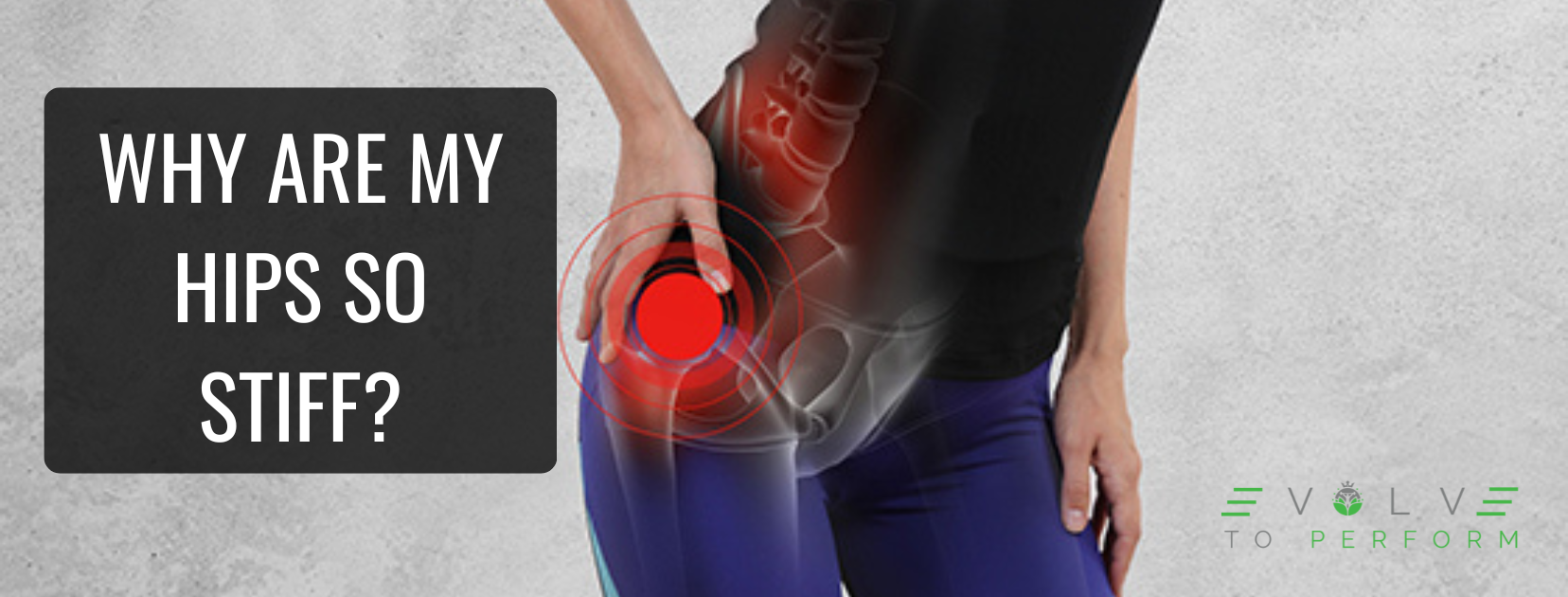
05 Aug Why Are My Hips So Stiff?
Do your hips ever feel super stiff after you have been sitting? After a drive? Or maybe it just takes a while to get them going in the morning? I can tell you that these are all super common, and it’s not just because you are “getting too old”.
Instead, it’s more likely that your hips feel some kind of way for several other reasons, all of which are related to what you do (or don’t do) throughout the day. By the end of this you will have a better understanding of why your hips have become such a problem, what you can do about it, and how to avoid having to read this post again.
The hips are two of our most mobile joints (second to the shoulders), allowing us to get into all different shapes and positions. They are also our two biggest engines that we can derive power from when it comes to performing just about any kind of athletic movement. Much like any other engine worth driving, they need to be maintained and taken for a spin every once in a while.
So, What’s Causing My Hip Pain?
- Being Deskbound
In a world dominated by computers and Zoom calls, most of us find ourselves stuck at the desk for long periods of time. Prolonged sitting leads the muscles around the hip to become shortened, stiff, and weak. So when it is finally time to break free you feel like you’re trying to walk with cement shoes on.
What To Do:
Sit Less
Schedule standing/walking breaks throughout the day. For every hour you sit, spend 15 minutes out of the chair. If you’re really serious, invest in a standing desk. I find that it helps break up the monotony of desk work, and it helps me to focus without getting too fidgety.
Squat More
In my opinion this is the most important point of the whole post. For most people in this country sitting in a squat is very uncomfortable, which has a lot to do with our lifestyle and culture. It is rare that we ever get our hips lower than the height of a chair. Meaning, that we are literally ignoring half of the range of motion our hips are capable of getting to.
If you look into eastern cultures that are more familiar with a hole in the ground than a toilet, you will notice that the adults and elders rarely lose the ability to squat. What is also rare in comparison to the US is the incidence of hip, ankle, or colon issues. Now I’m not suggesting we throw the baby out with the bathwater by getting rid of the toilet, but I am saying that we need to accumulate more time in the squat. Just the same as when we take standing breaks, it’s a good idea to take a squat break too.
Try spend at least 1-minute in a full squat as part of a break from the desk
Can’t get into this position?
Modify by propping your heels up an inch or two before squatting down.
- Skipping Leg Day
In order to maintain healthy joints it’s not only about mobility, but also strength. Our muscles serve two functions, they move the bones they are attached to through space, and they stabilize the joints they occupy; and a weak muscle can’t stabilize. Without adequate strength there is no support or stability, leading to irritation or injury at the hips.
What To Do:
Stop skipping leg day, bro. That’s not to say that you have to be a barbell athlete to have healthy hips. Low impact exercises like walking or cycling are great to get the hips moving too. The key is consistency.
- More of The Same
If you are performing a lot of repetitive movements for example, a golf swing, there is consistent pressure on the hips joint and surrounding muscles. Further, if you have an amateur swing similar to mine then you are certainly not the smoothest swing on the green. Without any TLC between rounds we can find ourselves feeling sub-par.
What To Do:
Take a Recovery Day.
If your hobby (let’s stick with golf) is directly aggravating to your hip pain, take a day to go through some active recovery.
Kettlebell Windmill – Lower Body
Build Strength
Performing the same movement over and over tends to create breakdown and weakness. Work to supplement this effect by strength training or finding a movement professional familiar with your sport.
The Takeaway
- If you are dealing with hip (or any other joint) pain, start to take action by assessing some of your daily routines. Ask yourself, how much am I sitting vs standing? How many steps am I taking? Can I get into a squat?
- Once you start moving don’t stop. Strength is vital, and consistency is key.
- Its ok to take a step back and focus on the problem areas. If the pain or problem persists find a physio thats going to keep you in the game. To set up a free 15-minute consult, call us at 516-421-6353 or you can email me directly at [email protected]

